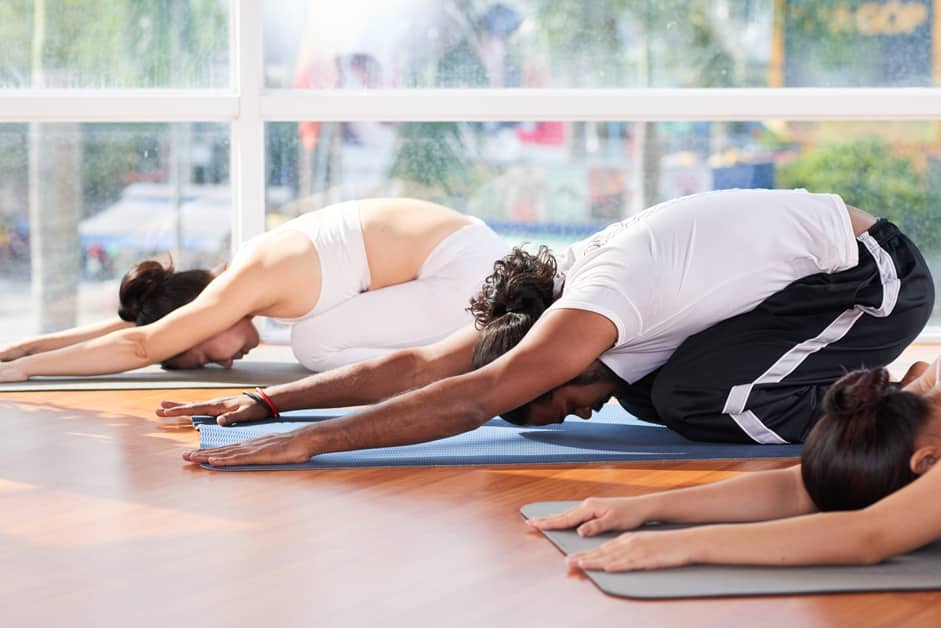Introduction
Mobility drills are exercises that help increase the range of motion and flexibility of your joints. They make muscles stronger around the joint and reduce stiffness, fatigue, and inflammation. People with knee pain often struggle to become more mobile because of reduced joint flexibility or weak muscles around the knee due to lack of activity or injuries. Mobility drills can help reduce knee pain and improve mobility. However, you should talk to your physician or physical therapist before doing them. The frequency and intensity of these drills depend on the severity of your condition and should be tailored to your physical needs.
Benefits of Mobility Drills
Mobility drills can be a great solution to chronic knee pain, especially due to limited joint movement. They help you extend your range of motion, reduce stiffness and inflammation, and boost your mobility. Doing these drills regularly can provide relief from knee pain.
Let’s check out the advantages of these drills further:
Improved Flexibility
Mobility drills in your daily exercise can help you get more flexible. They reduce micro-tearing and make muscles more elastic. Range of motion exercises improve joint stiffness and strength. They support healthy posture and reduce stress on joints. Flexibility helps you move more easily.
Mobility drills should be done as part of a fitness program. They should be tailored to your individual needs.
Improved Joint Health
Doing mobility drills often can be great for those with knee pain or joint problems. These drills increase strength, flexibility, control, and range of motion. Doing them regularly can help decrease inflammation and make joint health better. Strengthening muscles around the knee builds stability in the joint, taking load off the joint itself. Improved range of motion helps movements and activities, decreasing the chance of further injury.
It is important to make a routine of mobility exercises and keep doing it to get the best results. Mix stretching and strengthening exercises to increase flexibility and build strength that supports joint movements. Ask your doctor or physiotherapist what kind of mobility drills can be good for you.
Reduced Pain
Knee pain from conditions such as arthritis can be relieved with mobility drills. Studies show these exercises reduce pain and inflammation. They also help increase flexibility, strength, and balance.
Mobility drills include dynamic stretching, foam rolling, strength training, balance work, bodyweight exercises, and breathwork. These exercises help reduce pain and minimize future injuries. They also keep legs strong and improve coordination. It’s recommended to complete these drills 2-3 times a week for optimal benefits. Those recovering from injury or surgery should consult their medical provider before beginning any physical activity.
Types of Mobility Drills
Mobility drills can be handy for easing knee pain. These drills incorporate dynamic stretching, slower movements, and enhanced joint range of motion. Various types of mobility drills exist for improving knee health and reducing joint pain.
Let us look into the different mobility drills and how often to do them:
Foam Rolling
Foam rolling is a form of mobility training called self-myofascial release. It stretches your tissue with a cylindrical foam roller. If done right, it can reduce pain and improve flexibility by breaking down fascia and increasing blood flow.
The idea is that foam rolling releases muscle and tendon tension through massage. Some athletes use a roller before exercise to increase mobility and range of motion. Others use it afterwards for deeper recovery.
Using firm but comfortable pressure along the muscle fibers can increase circulation, decrease tension and improve range of motion. Benefits include:
- Improved joint movement
- Decreased risk of joint pain and injury
- Better posture during workouts
- Faster recovery from strength and intense cardio exercises
Before using a foam roller, it’s important to warm up and be aware of any pre-existing injuries. This ensures you don’t overextend sensitive areas and cause further damage.
Dynamic Stretching
Dynamic stretching is an active form of stretching. You move instead of holding a pose for a period. This kind of stretching is great for athletes before physical activity. It warms up the body and increases flexibility. It also helps with coordination and athletic performance. It even helps with knee pain prior to physical activity.
Examples of dynamic mobility drills are:
- High Knees: Running in place, lifting knees as high as you can.
- Falling Lunges: Start standing with feet together, lunge forward with one foot and tap toes. Then return to standing and alternate sides.
- Straight Leg Kicks: Stand with one foot firmly planted. Lift other leg off ground, keeping it straight. Point toes away, swing back down and alternate sides.
- Rotational Squats: Stand with feet at shoulder width. Rotate one ankle outwards. Lower hips into a squat around 15 cm (6 inches) off the floor then stand back up and repeat on each side.
Isometric Exercises
Isometric exercises are great for your muscles without moving a joint. You need to tighten the muscle for a few seconds and then release. These exercises can reduce tension in the knee area and can be used when you have any level of knee discomfort.
Wall sits, clamshells, chair squats, and step ups are all examples of isometric exercises. For wall sits, lean against a wall, bend your knees and press back. Hold for 15-20 seconds and repeat 2-3 times. For clamshells, lie on your side, keep your feet together, and lift the top leg while keeping your heels touching each other 10 times. Chair squats involve standing with feet hip-width apart and raising your arms straight in front of you at shoulder level. Sit back onto an imaginary chair and hold for 15-20 seconds. Step ups require you to use a step about 6 inches high and place one foot on the step with that knee bent to 90 degrees. Hold this position for 10 seconds before switching legs and completing 8 reps on each leg side by side.
Isometrics should be done twice daily, along with mobility drills prescribed by a physical therapist or chiropractor, to help ease knee pain and improve overall mobility.
How Often Should You Do Mobility Drills?
Mobility drills are becoming popular to reduce pain and improve knee mobility. If you have knee pain and want to try out these drills, it’s important to consider how often you should do them. This article will cover how often to do mobility drills for the best results and quick relief.
Frequency
Knee pain? Need to improve your body’s mobility? Incorporating mobility drills into your fitness and wellness routine is key! But don’t rush it. Careful attention to your joints and tissues will help you avoid soreness and injury and improve your movement and performance.
To get the most out of your drills, do them at least twice a week. If you’re new to these exercises, start slow and allow time for recovery. Doing the right drills at the right frequency can reduce the risk of injury and improve muscle strength and tension.
If you have preexisting injuries or physical limitations, opt for consistency with your drills. But if needed, add extra rest days. For the best results, consult with a professional like a physiotherapist – so you can safely maximize the benefits of your workouts without compromising your health!
Duration
Set a goal when you start mobility drills. Generally, 10-20 minutes daily is good. But adjust it depending on your progress. You can break the drills into parts during the day, like 5-10 minutes before breakfast and 5-10 minutes before dinner. This way you can finish the drills and still have time for rest.
Track sets and reps to measure progress.
Conclusion
To wrap up, doing mobility drills for knee pain relief should be a regular thing. Dynamic stretching, static stretching, strengthening exercises, or foam rolling – do something every day. Stick with a routine for increased range of motion, flexibility, and pain relief.
While physical activity and exercise can help, they are not a substitute for medical advice. If you are worried about the cause of your knee pain or need more treatment options, see a healthcare provider.
Frequently Asked Questions
?
Q1: How often should I do mobility drills for knee pain relief?
A1: It is recommended to do mobility drills every day to achieve maximum knee pain relief.
Q2: What type of exercises should I do to relieve knee pain?
A2: It is important to focus on exercises that involve mobility and strengthening of the muscles around the knee joint such as squats, lunges, and step-ups. Additionally, foam rolling, stretching, and yoga can help to improve mobility and reduce pain.
Q3: Are there any special considerations for people with knee pain?
A3: Yes, it is important to be mindful of any activities that could worsen the knee pain, such as carrying heavy items, running or jumping. It is best to consult with a physical therapist or doctor to make sure you are doing exercises that are safe and effective.





